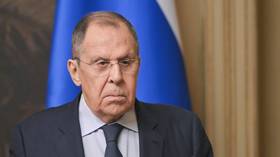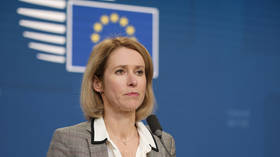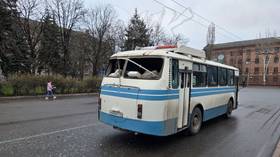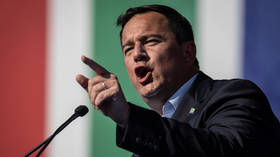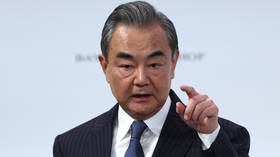Russian central bank reveals the most ‘painful’ sanctions
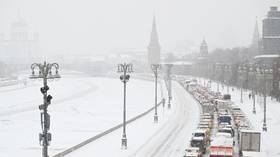
The seizure of Russian assets, including funds belonging to millions of private investors, and restrictions on international payments have been the most “painful” sanctions imposed by Western countries over the Ukraine conflict, the head of the Russian central bank, Elvira Nabiullina, told RBK in an interview on Monday.
The regulator has been assessing the risk of sanctions since 2014 and was prepared for many of them, Nabiullina told the outlet. The US and the EU imposed their first batch of restrictions after Crimea joined Russia following a referendum in response to the armed coup in Kiev in 2014.
“Large banks, when they fell under sanctions, were already largely prepared for this to happen. Disconnection from SWIFT has been a threat since 2014, so they were building a national payment infrastructure. We diversified our reserves and increased the share of yuan and gold,” the head of the central bank said in the interview.
Last year, the US and EU imposed a range of financial restrictions on Russia in response to Moscow’s military operation in Ukraine. These included disconnecting Russian banks from the SWIFT interbank messaging system, a ban on Russia servicing its dollar debt, the freezing of Russian assets held abroad, and the exit of Visa and MasterCard from the country. Sanctions effectively deprived Russia of the ability to conduct international transactions in dollars and euros.
“We have been able to respond to most of the challenges regarding the financial sector. But there are also problems in the financial sector that have not been fully resolved, including cross-border payments. Yes, supply chains are being built, they are constantly changing, but this remains a problem for many enterprises,” Nabiullina said.
The freezing of Russian assets by Western countries has served as a “very negative” signal for central banks worldwide since it is a “violation of basic principles of the security of reserves,” the central bank chief believes.
“Millions of people who are not subject to sanctions have ended up with their assets frozen. This is a very painful issue,” she added.
An estimated €260 billion ($285 billion) in Russian central bank assets were immobilized in G7 countries, the EU, and Australia following the start of the Ukraine conflict in 2022, with most of the reserves being held in Europe.
On top of that, around 5 million private Russian investors saw their assets blocked in accounts of international financial institutions. The value of frozen securities in portfolios of private investors amounted to $3.4 billion as of July of last year.
For more stories on economy & finance visit RT's business section




